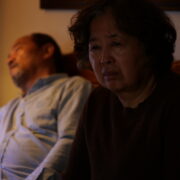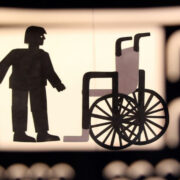Sculptures in Time Pt. IV: Tarkovsky’s THE MIRROR
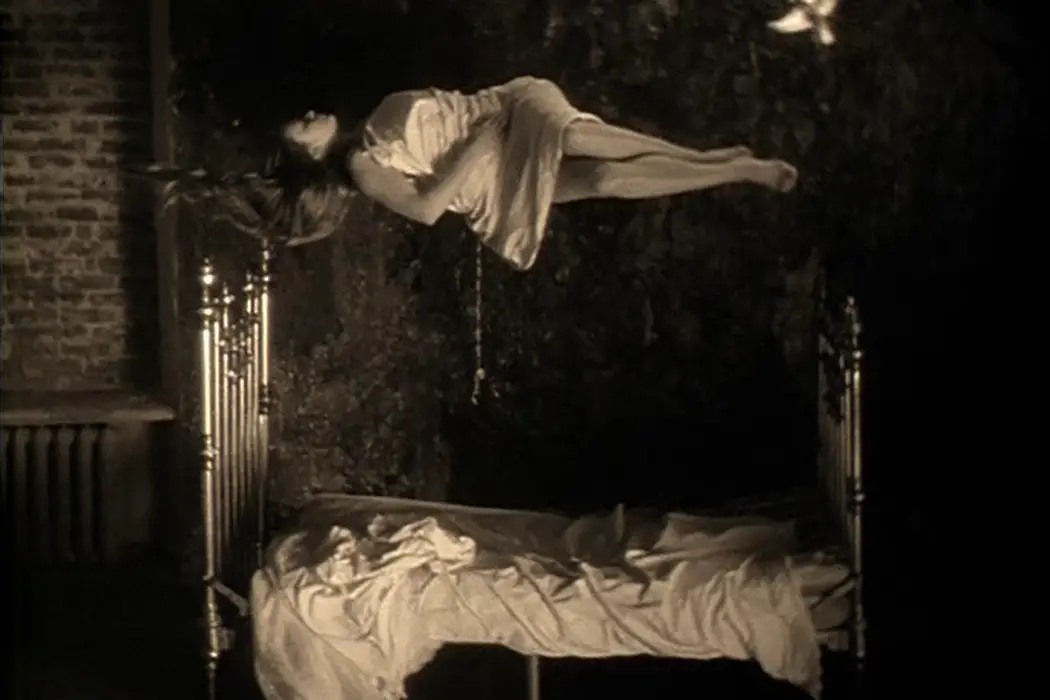
Stephen Borunda is an educator and filmmaker currently located in…
At the opening moments of Andrei Tarkovsky’s 1975 film The Mirror, the protagonist’s son Ignat powers on his television screen and witnesses a fascinating medical enchantment. The television screen – which quickly becomes our screen – reveals a teenager undergoing a medical hypnosis procedure in order to correct his fervent stutter. At the conclusion of the successful hypnosis procedure, the doctor declares to the boy that “you will speak loudly and clearly all of your life.”
The deployment of this scene in the film’s inciting moments is no coincidence. In his work on film theory entitled Sculpting in Time, Tarkovsky states that The Mirror was an attempt to “use the means of cinema to talk of all that was most precious to me…” Tarkovsky sought to use the film to provide an honest and holistic view of his life; in other words, this work was his effort to speak his life into a visual form. However, it is worth noting that his film was so controversial amongst his collaborators that he had to find a new cinematographer after a falling-out with Vadim Yusov – due to a dispute dealing with the overt autobiographical nature of the film.
Revelations of The Mirror
Tarkovsky was very modest about the aims of his film. A cinematic iconoclast of sorts due to his distaste for symbolism, Tarkovsky stated that The Mirror contained “no hidden coded meaning in the film…” It was “nothing beyond the desire to tell the truth…” about his life. The film uses numerous techniques to render a life, including the juxtaposition of timelines from the past, present, and future of main character Alexei’s life, the utilization of the same actors and actresses in multiple roles, the overlay of poetry over the visuals of the film, and the portrayal of various characters with equal significance; all of this in order to depict a syncretic account of the character of Alexei.
Such directorial decisions were esoteric ones even though they may seem ostentatious and verbose to the general public. I contend the film uses such techniques in order to show that Tarkovsky’s life is not his own but a concatenation. He owes it those people and events from his life. In this way, perhaps Yusov’s concerns were unfounded; the film is not purely a work of self- aggrandization but a work of gratitude to those movers and shapers in Tarkovsky’s life.
Literature in Service of the Visual
One of Tarkovsky’s most bizarre choices is his willingness to jump from timeline to timeline throughout the film. In order to help make sense of this seemingly disorderly dramaturgical technique, let us consider related conceptions of time proposed by two literary giants of the 20th century – Argentine author and poet Jorge Luis Borges and American author Kurt Vonnegut. In a short story by Borges published in 1940 entitled “Tlön, Uqbar, Orbis Tertius,” Borges (as the narrator in his story) discovers a conspiracy by members of the intelligentsia to create a world only in theory.
Scholars crafted an entire apparatus to support the world of Tlön; scientific theories, historical events, psychological systems, and metaphysical works legitimated the existence of this planet. Interestingly, one of the schools in Tlön “reached the point of denying time.” In the epistemology of this particular understanding of temporality that exists on Tlön, “[T]he present is undefined, that the future has no other reality than as present hope, that the past is no more than present memory.” Thus, all of time is crunched upon itself. The past, present, and future do not exist as defined and independent constructions.
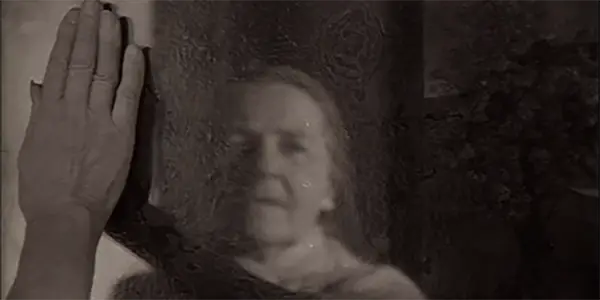
In Kurt Vonnegut’s Slaughterhouse Five (1969), the book’s protagonist Billy Pilgrim explains the metamorphosis of his grasp of time that occurs during his journeys on an alien planet:
“The most important thing I learned on Tralfamadore was that when a person dies he only appears to die. He is still very much alive in the past, so it is very silly for people to cry at his funeral. All moments, past, present and future, always have existed, always will exist. The Tralfamadorians can look at all the different moments just that way we can look at a stretch of the Rocky Mountains, for instance. They can see how permanent all the moments are, and they can look at any moment that interests them. It is just an illusion we have here on Earth that one moment follows another one…”
Thus, Borges and Vonnegut both utilize a conception of time lacking in clear delineations. The past, present, and future are homogeneous in nature. These ideas are consistent with the works of physicists such as Stephen Hawking. Hawking states in A Brief History of Time, “the laws of science do not distinguish between the backward and forward directions of time.”
In The Mirror, Tarkovsky’s film implicitly explores such ideas about non-linear temporality by showing the lives of the protagonist representing Tarkovsky named Alexei, along with his wife Natalia, his mother Maria, his father, and his son Ignat as not just interrelated or interdependent – but one. Timelines and perspectives recede into each other. However, these individuals are also impacted by current and past global events as they contributed to the zeitgeist of the post-WWII world. Thus, Tarkovsky also features a fairly extensive amount of documentary footage from various global conflicts from the epoch. All of time – from the intrapersonal (even dreams) to the interpersonal – plays upon itself in its depiction of a life.
Points of Intersectionality in a Life
The spectator finally understands at the denouement of The Mirror that Alexei is ill and he, tragically, passes away in the film’s final moments. We can thus view the film as a depiction of the entirety of Alexei’s life and beyond. The title “The Mirror” implies an act of reflection, and this film can be viewed as Alexei’s contemplations on his life. One moment near the film’s coda shows Alexei staring into a mirror – wondering who he might become or who he is destined to become.
Throughout the film, the camera is directed towards mirrors but we never see Alexei’s adult face. Instead, we view the reflections of characters of significance to Alexei’s life in the mirror. In this way, Tarkovsky implies that his very reflection is not his own. As we have already stated, a life is not just constituted of the events and actions taken by one person; a man is a reflection of the societies and individuals with which he is intertwined. Tarkovsky strives to produce a homogeneous interpretation of a life through the melding of such components in the film to a near-indistinguishable form.
Margarita Terekhova plays both Alexei’s mother Maria and his wife Natalia. This peculiar casting choice is acknowledged by Natalia, as she bluntly states the similarities between Maria and herself. From the onset of the film, Maria is depicted as a woman forced to care for her children alone due to her husband’s absence as a result of war. Maria is a very stubborn woman and lambasted by her colleagues at the local newspaper for never admitting mistakes. Yet, Maria is also wise and loving even when the family falls into poverty due to the war. Natalia, alternatively, is a woman embittered by Alexei’s neglect of her and their son Ignat. Alexei attributes his decisions as a result of his growing up sans a father.
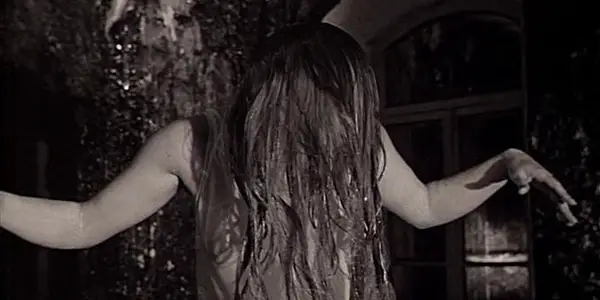
Alexei’s father (played by Oleg Yankovsky) is both absent and omnipresent. The poems of Andrei Tarkovsky’s father, Arseny Tarkovsky, are heavily featured in the film and set the moods for various scenes. In this way, a father figure is constantly featured in The Mirror. However, only near the end of the film does the father take a physical form. When the father returns to his family, military dress suggests that he was away fighting for Russia during World War II.
The film also features Ignat Daniltsev as both a young Alexei and his son Ignat. He is stuck between pressures exerted from his father Alexei and his mother. He is a mirror of his father in some ways, as both are featured in scenes in which they are studying various artistic and historical topics.
In addition to persons, the milieu of Tarkovsky’s life was also heavily influenced by war. Alexei recalls his training as a youth in World War II, his family’s evacuation from Moscow, and the absence of his father due to the war. His memories are also shown through newsreels of World War II, the Spanish Civil War, and the Sino-Soviet Border Conflict.
According to Tarkovsky, some of these scenes from World War II were “filmed by an outstandingly gifted camera-man.” One such moment from the newsreels depicts a Soviet advance on German troops in 1943 that very quickly became “the centre, the very essence, heart, nerve of this picture that had started off merely as my intimate lyrical memories.” The black and white footage shows Russian soldiers walking through muddy and polluted terrain. Soldiers walk without any protection for their feet and many of them are pulling instruments of war, including tanks and cannons, through the water. This scene became crucial for Tarkovsky, because it was about the “suffering” that was the “price for what is known as historical progress, and of the innumerable victims from time immemorial” that he had observed as a child.
Potentiality and Hope for Tomorrow in Tarkovsky’s Work
Despite the film’s dour presentation with its dark lighting, moody aesthetics, and war themes, it also presents hope for the future. One prominent theme Arseny Tarkovsky addresses in his poetry is that of fire. In his poem “The Knife-Grinders,” the elder Tarkovsky writes “Open-mouthed, seeing nothing but fire, I moved from one knife-grinder to another…I was too small to think about what was happening to me, I was dissolving into fire…” In the film, Arseny’s son creates a film in which fire is a consistent visual motif (houses burn and candles are a part of the film’s mise-en-scène). Such imagery speaks to the creative potential of fire.
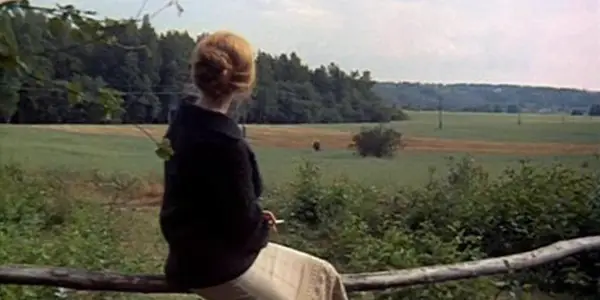
According to Nietzsche in his famed philosophical work Thus Spoke Zarathustra “when a person goeth through fire for his teaching – what doth that prove! It is more, verily, when out of one’s own burning cometh one’s own teaching!” We learn through the destruction and subsequent reconstruction of our being, and The Mirror hints at such lessons that Alexei and humans generally might learn despite the struggles of an impoverished childhood and adulthood as a divorcée.
When Alexei dies, we see the visual of a bird flying away, indicating that Alexei’s soul has left his body. The present then recedes into the past as we subsequently witness Alexei’s father speaking to a pregnant Maria about their future child. Maria begins to cry, almost as if she knows the pain that her child will undergo in life. Yet this future pain may also be the catalyst for potentiality. The older version of Maria, played by Tarkovsky’s mother Maria Vishnyakova, walks across the forest with children. They trek past the remains of warfare, oil, and money. But, all of these items seem discarded, implying that our future may be without the need for such items. The Mirror concludes with a primal scream from Ignat, almost as if he were simultaneously one with nature and at peace with his own humanity.
What do you make of The Mirror’s dreamlike storyline? Where does it rank amongst Tarkovsky’s film pantheon? Let us know in the comment section!
Does content like this matter to you?
Become a Member and support film journalism. Unlock access to all of Film Inquiry`s great articles. Join a community of like-minded readers who are passionate about cinema - get access to our private members Network, give back to independent filmmakers, and more.
Stephen Borunda is an educator and filmmaker currently located in Baltimore, Maryland. He completed his undergraduate and graduate education at the Johns Hopkins University. Stephen loves metaphysical films, photography, inspirational poetry, philosophy with political utility, and bashing his head in as a rugby player. Hopefully, his writing doesn't suffer too much as a result of this trauma.



